
Shipwreck Coins
14K views · Dec 28, 2023 findrarecoins.com
Shipwreck Coins and the stories they tell about history on the high seas.
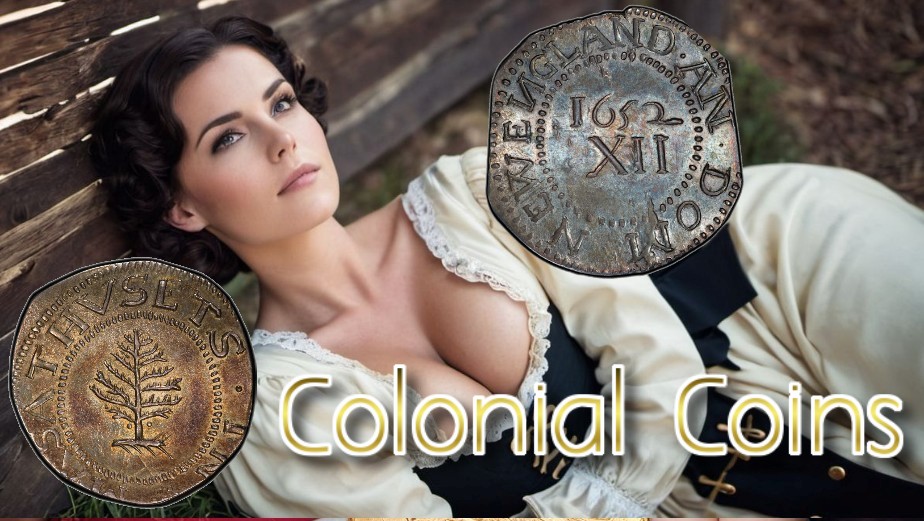
The Coinage of Early Colonial America
10K views · Dec 25, 2023 findrarecoins.com
The introduction of coins in the 13 colonies marked a significant milestone in the early history of what would become the United States. These colonies, inhabited by settlers primarily of English and European descent, relied on a variety of currencies and barter systems before the establishment of their own coinage.

Collecting and Investing in Gold Bullion
4K views · Dec 26, 2023 findrarecoins.com
For centuries, gold has been considered a stalwart asset, offering a reliable refuge for those looking to preserve their financial well-being in times of economic uncertainty.
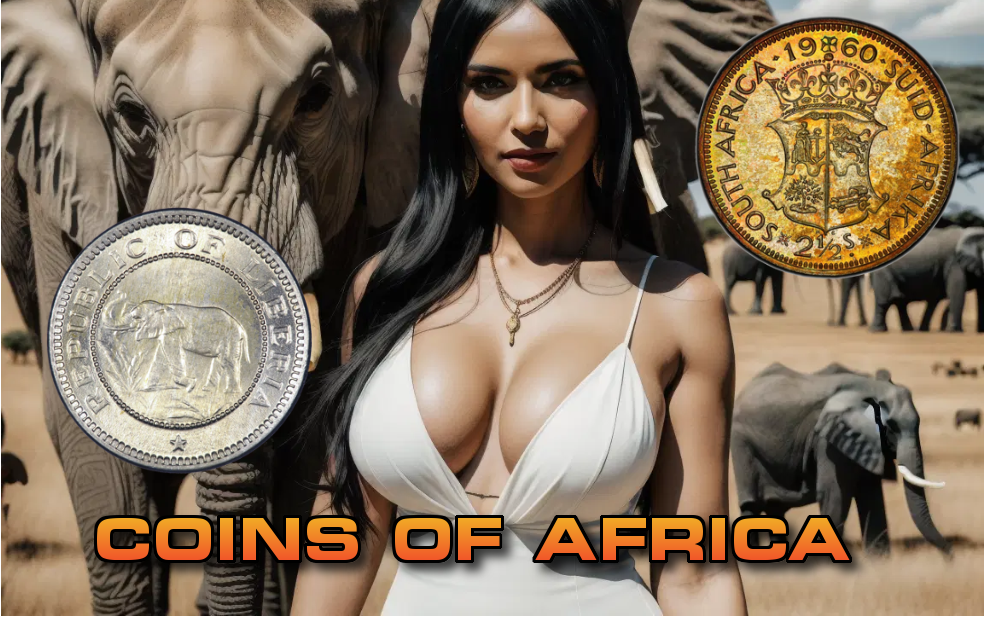
The Diverse Coins from the African Continent
6K views · Dec 26, 2023 findrarecoins.com
The coins of Africa hold a rich tapestry of history, culture, and monetary evolution that spans millennia.

The Art of Collecting Vinyl Records: A Journey Through Time
15K views · Dec 26, 2023 findrarecoins.com
The world of vinyl record collecting is a vast and fascinating one, with a multitude of aspects and nuances that contribute to its enduring popularity.
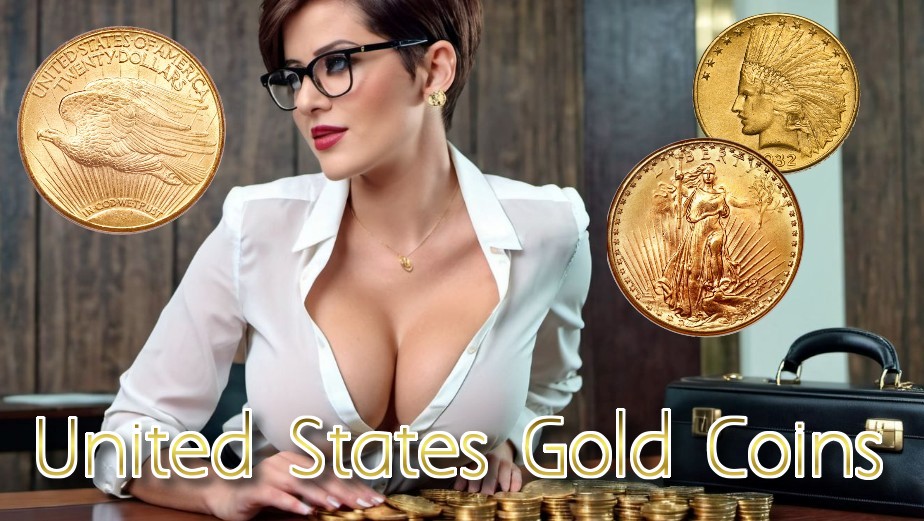
Collecting and Investing in United States Gold Coins
14K views · Dec 29, 2023 findrarecoins.com
Investing in United States gold coins can offer several advantages, combining the appeal of historical significance, rarity, and potential for price appreciation.

Morgan Silver Dollar Coins
3K views · Jan 3, 2024 findrarecoins.com
The United States Morgan dollar coin holds a special place in the annals of American numismatic history, and it's fascinating story unfolds through a rich tapestry of historical events, legislative acts, and the creative vision of a talented British-born engraver.

How to Find the Value of Your Coins
20K views · Mar 4, 2024 findrarecoins.com
Easy to use online tools to help you value your coins. Determining the value of rare coins requires a combination of expertise, research, and sometimes consultation with professionals in numismatics. Here's a general guide on how to approach grading and valuing rare coins.
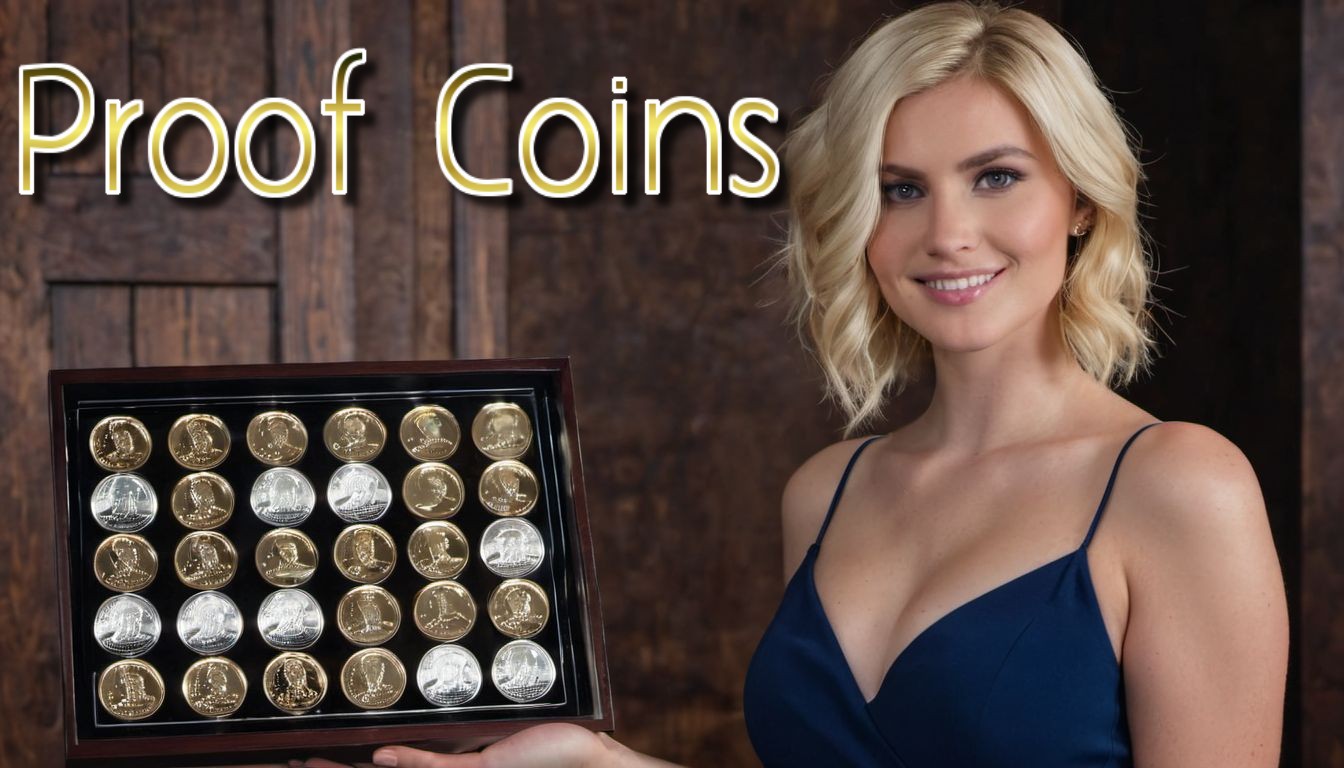
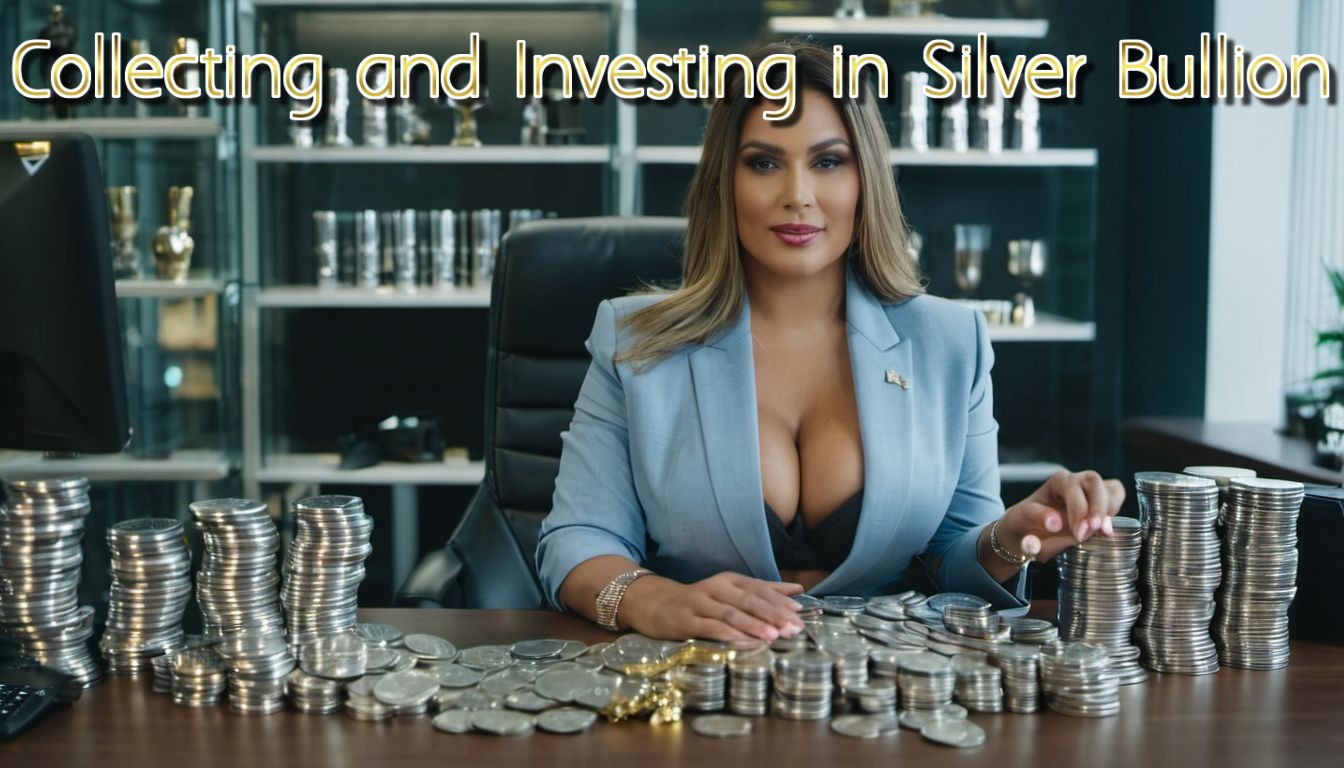
Silver Bullion for Collecting and Investing
10K views · Mar 5, 2024 findrarecoins.com
Silver bullion coins and bars are physical forms of silver that are used for investment purposes. They are made from pure silver and are considered to be a store of value, similar to gold. They are typically minted by government or private mints and have a legal tender value in the country they were minted in. Examples of government-minted silver coins include the American Silver Eagle, Canadian Silver Maple Leaf, and the Australian Silver Kookaburra. Private mints may also produce silver coins, such as the Silver Britannia from the Royal Mint.
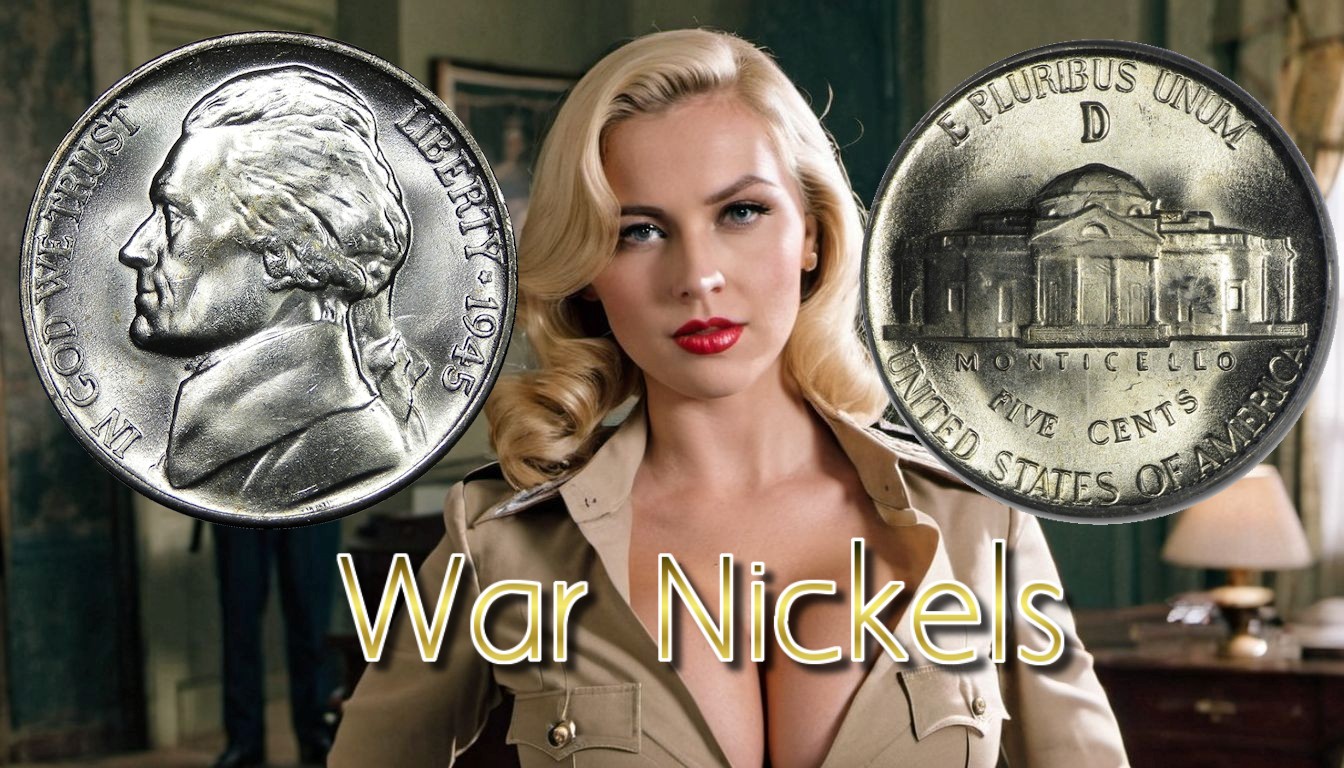
Silver War Nickels and Steel Pennies
5K views · Jan 9, 2024 findrarecoins.com
Both silver war nickels and steel cents are interesting aspects of United States coinage history

The Art of Vinyl_ A Guide to Collecting, Finding, and Preser...
34K views · Mar 9, 2024 findrarecoins.com
Vinyl records, once thought to be a relic of the past, have experienced a remarkable resurgence in recent years. But collecting vinyl is more than just owning music; it's a journey filled with history, art, and the thrill of the hunt. Come along as we explore collecting vinyl records.

The History of Collecting Dolls_ A Journey Through Time
2K views · Mar 13, 2024 findrarecoins.com
In recent years, the demand for vintage and antique dolls has experienced a remarkable surge, a trend that has significantly impacted their prices in the collectibles market. This remarkable phenomenon can be attributed to a multifaceted set of reasons, each contributing to the growing popularity and value of these cherished playthings from the past. From nostalgia and sentimental value to rarity and investment potential, the world of antique dolls has undergone a remarkable transformation.

The Evolution of Television Sets in the 1950s
6K views · Mar 13, 2024 findrarecoins.com
Television sets have come a long way since their inception in the early 20th century. If you remember classic TV shows like “Queen for a Day,” “What’s My Line,” or “Truth or Consequences,” you likely watched them on the classic TV sets that were once ubiquitous in living rooms across the country. These television sets were not just electronic gadgets; they were also pieces of furniture. The history of the television is a fascinating journey, filled with innovation, creativity, and the evolution of technology. The television’s journey began with John Logie Baird, a Scottish inventor who is credited with the invention of the first television in 1925. Baird’s system used a mechanical approach that involved a rotating disc to scan images onto a screen. This early television was a far cry from the sleek, high-definition screens we have today, but it was a revolutionary concept at the time. It marked the beginning of a technological transformation that would change the way people consumed information and entertainment.

Collecting Challenge Coins
2K views · Mar 17, 2024 findrarecoins.com
Challenge Coins have a rich history with various stories and origins attributed to them. A Symbol of History, Camaraderie, and Recognition Challenge Coins have a rich history with various stories and origins attributed to them. These small, distinctive tokens carry significant meaning and have become a symbol of camaraderie, teamwork, and recognition in various organizations and groups. The history of Challenge Coins is a tapestry of fascinating accounts, each reflecting the essence of the coin’s purpose and value. https://findrarecoins.com/challenge-coins/
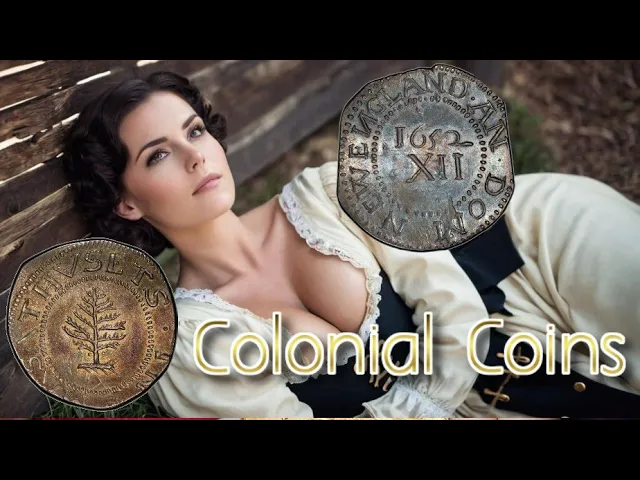
Early Colonial Coinage of America
7K views · Mar 17, 2024 findrarecoins.com
The introduction of coins in the 13 colonies marked a significant milestone in the early history of what would become the United States. These colonies, inhabited by settlers primarily of English and European descent, relied on a variety of currencies and barter systems before the establishment of their own coinage. Visit: https://findrarecoins.com/colonial-coins/
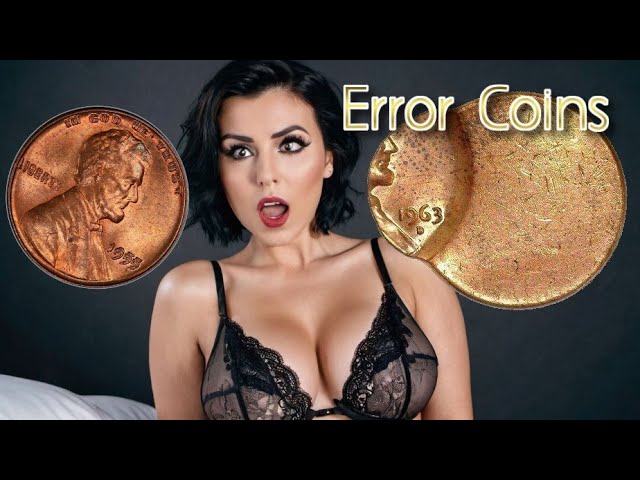
Exploring the Fascinating World of Error Coins
5K views · Mar 17, 2024 findrarecoins.com
Error coins, those intriguing anomalies in the world of numismatics, offer collectors a diverse array of captivating varieties. These coins, marked by their manufacturing mishaps, open a portal to the fascinating realm of numismatic exploration. Within this realm, enthusiasts encounter coins bearing a multitude of intriguing traits, from off-center strikes to mechanical doubling, die breaks, indents, struck-through errors, and coins with curved or clipped planchets. Furthermore, double die coins and coins with missing lettering are but a glimpse of the rich tapestry of error coins that tantalize collectors with their uniqueness. In essence, the world of error coins is a playground for numismatists, offering both challenges and rewards. To truly appreciate the allure of error coins, every collector should consider incorporating at least a couple of these peculiar specimens into their collection. Not only does this diversify their collection, but it also serves as a compelling window into the intricate world of coin minting processes. By studying error coins, collectors gain insights into the art and science behind coin production, revealing the technology and techniques employed by mints throughout history. Visit: https://findrarecoins.com/error-coins/
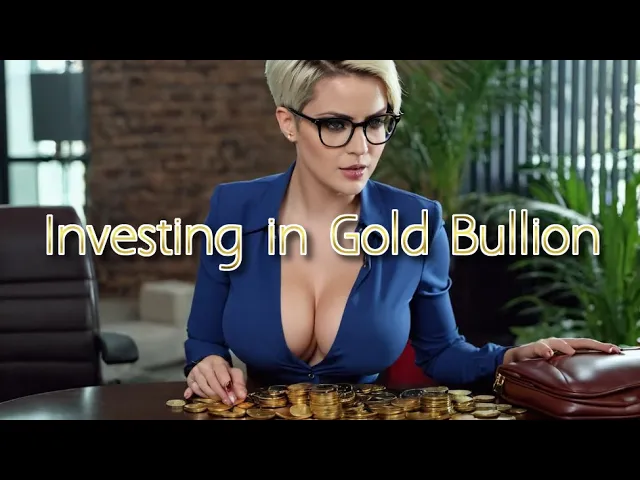
Tips for Buying Gold Bullion
1K views · Mar 17, 2024 findrarecoins.com
Investing in gold bullion can be a great way to diversify your portfolio and protect your wealth. There are several ways to invest in gold, including buying physical gold, gold stocks, gold funds, and gold futures. Here are some of the most common ways to invest in gold. Physical gold is what most people picture when they think about investing in gold. You can buy gold bars or coins from dealers who are active on one of several global bullion markets. However, physical gold can be tough to maintain, secure, and sell. Gold stocks involves buying stock in a gold-mining company. It comes with some risk, but it means you have complete control over which specific companies you invest in. Gold funds involves investing in gold mutual funds, which give you shares in multiple gold-related assets, like many companies that mine or process gold. However, you don’t own the actual gold or stocks. Gold futures involves trading gold futures or futures options. They enjoy more liquidity than physical gold and no management fees, though brokerages may charge trading fees on them. It’s important to note that gold does not produce cash flow like other assets, and should be added to your investment mix in a limited quantity and with caution. Visit: https://findrarecoins.com/gold-bullion/

Morgan Silver Dollar Coins
3K views · Mar 17, 2024 findrarecoins.com
In the latter half of the 19th century, the United States was experiencing a period of economic transformation and growth. It was during this time that the Morgan Silver Dollar, a legendary coin, made its debut. The story begins in 1878 when the Bland-Allison Act was passed by the U.S. Congress. This act mandated the purchase of large quantities of silver to be minted into silver dollars. To oversee the design of this new coin, mint director Henry Richard Linderman turned to a talented young engraver named George T. Morgan. George Morgan, a British immigrant, was tasked with creating a coin that would embody the spirit of America. Drawing inspiration from classical art and the neoclassical style, Morgan meticulously crafted the design for the silver dollar. Lady Liberty graced the obverse of the coin, her regal profile crowned with a cap inscribed with the word "Liberty." The reverse featured a majestic bald eagle with outstretched wings, clutching arrows and an olive branch. The first Morgan Silver Dollars were struck at the Philadelphia Mint in 1878, marking the beginning of a coin that would become an enduring symbol of American numismatic history. However, production faced some interruptions in the early years, including the discontinuation in 1904, as silver mining interests lobbied for a halt in coinage to reduce competition for their metal. In 1921, the Morgan Silver Dollar experienced a revival due to the Pittman Act, which required the melting of millions of silver dollars to stabilize silver prices. The U.S. Mint resumed production, and Morgan's design graced the coins once again, but this time with a slight modification to the design. Despite its popularity, the Morgan Silver Dollar faced its final chapter in 1928 when it was officially retired from production. Decades later, in the 1960s and 1970s, a surge of interest in coin collecting led to a renewed appreciation for the Morgan Dollar, and it became a sought-after item among enthusiasts and investors. Today, the Morgan Silver Dollar stands as a testament to a bygone era in American history, embodying the economic shifts, political decisions, and artistic endeavors of the late 19th and early 20th centuries. As collectors and numismatists continue to cherish these silver coins, the legacy of the Morgan Dollar lives on, forever intertwined with the rich tapestry of American coinage history. Visit: https://findrarecoins.com/morgan-dollars/
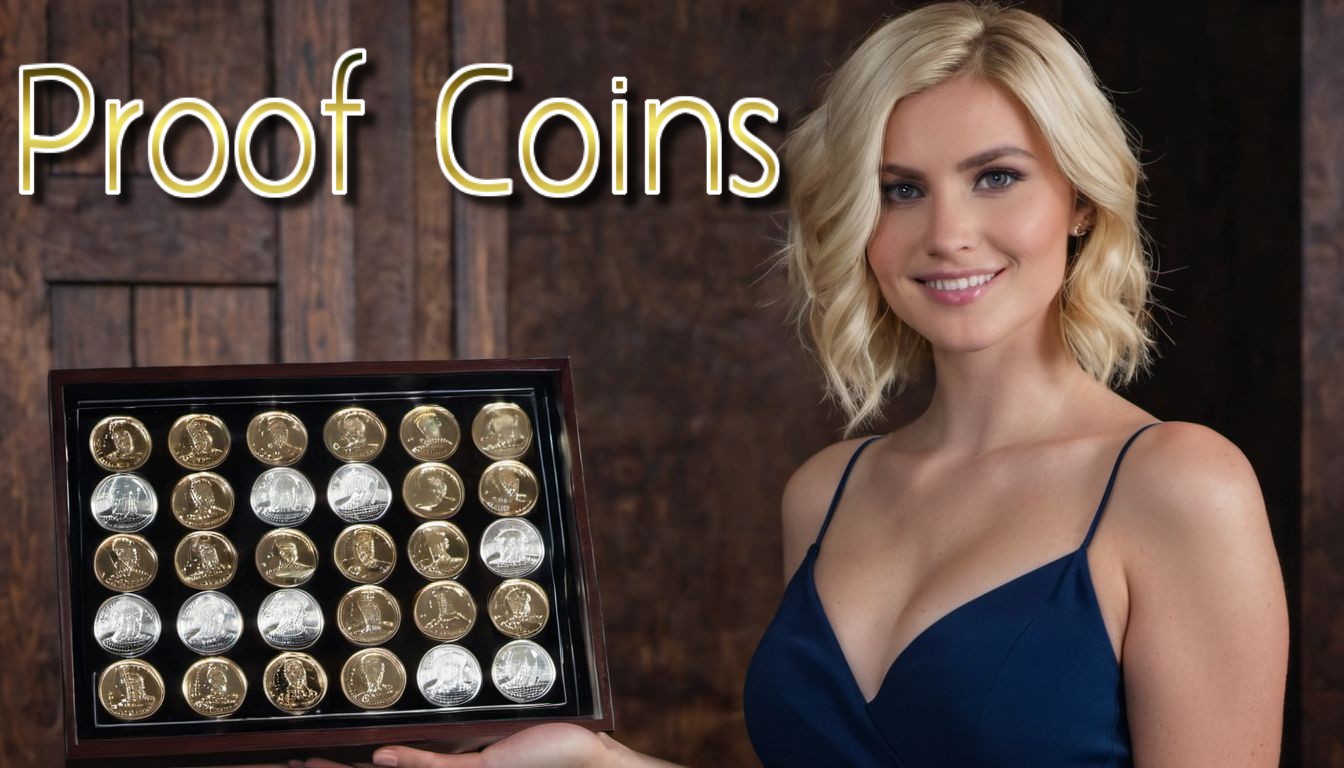
United States Mint Proof Coins
571 views · Mar 17, 2024 findrarecoins.com
The origin of United States proof coins can be traced back to the early 19th century. The term "proof" refers to a method of manufacturing coins with a specialized minting process to create high-quality specimens for collectors. The development of proof coins was driven by the desire to showcase the craftsmanship and precision of the U.S. Mint's coinage. The first documented proof coins in the United States were struck in 1817 during the production of the Matron Head large cent. However, proof coinage did not become a regular part of the U.S. Mint's production until the mid-19th century. The initial purpose of proof coins was to serve as examples for Mint officials, engravers, and government officials to review the quality of the coin dies and the overall production process. Over time, the U.S. Mint began to recognize the demand for proof coins among collectors and numismatists who sought higher quality and specially minted coins for their collections. In response to this demand, the U.S. Mint started producing proof coins specifically for collectors, and these coins were made available for purchase. The production process of proof coins involves several additional steps compared to regular circulation coins. The dies used for proof coinage are meticulously polished to create a mirror-like finish on the coin's fields (the flat, raised portions of the coin's surface). The raised design elements on the coin, known as the devices, are frosted to create a contrasting appearance against the polished fields. This combination of mirrored fields and frosted devices gives proof coins a distinct and attractive appearance. Proof coins are typically struck multiple times with specially prepared coin dies to achieve a sharp level of detail and quality. The coins are also handled with greater care to avoid blemishes or imperfections. Today, proof coins are produced at various U.S. Mint facilities, including the Philadelphia Mint, the Denver Mint, and the San Francisco Mint. The U.S. Mint releases proof coin sets annually, featuring proof versions of different denominations, and these sets are popular among collectors and investors. Additionally, the U.S. Mint may produce individual proof coins for specific commemorative or collector programs. Visit: https://findrarecoins.com/proof-coins/

Collecting Shipwreck Coins
5K views · Mar 17, 2024 findrarecoins.com
Shipwreck coins are tangible links to the past, relics of maritime misadventures that provide valuable insights into the history and cultures of bygone eras. These coins, often discovered in the most unexpected places, have an enduring allure for historians, collectors, and investors alike. Shipwreck Coins tell about history on the high seas. Visit: https://findrarecoins.com/shipwreck-coins/

Buying Silver Bullion
3K views · Mar 17, 2024 findrarecoins.com
Silver bullion is a term used to describe silver in bulk form, such as bars, coins, or rounds. Silver bullion is often purchased for investment purposes, as it is a tangible asset that can be stored and traded. Silver bullion bars are rectangular-shaped pieces of silver that are produced by private mints and government mints. They come in various sizes, ranging from 1 ounce to 1000 ounces, and are usually made of .999+ pure silver. Silver bullion coins are coins that are minted by government mints and are usually stamped with a face value. They are also made of .999+ pure silver and come in various sizes, ranging from one tenth ounce to 1 kilogram. Silver rounds are similar to coins, but they are not legal tender and are produced by private mints. They are usually made of .999+ pure silver and come in various sizes, ranging from one tenth ounce to 10 ounces. Silver bars come in various purities, with 99.9% and 99.99% being common. Higher purity is generally preferred for investment purposes. Like bars, silver coins also come in various purities. Common purities include ninety nine point nine percent to ninety nine point nine nine percent. Bars come in different sizes, ranging from small fractional bars such as one ounce to larger bars weighing one hundred ounces or more. Silver bullion bars and coins are made through a series of processes. Silver is usually extracted as a byproduct of other mining processes such as copper, lead, and zinc purification. Once the silver is extracted, it is purified through a process called “flotation” and then smelted to melt the disperse fragments into manageable chunks. Other extraction techniques include the amalgamation process and the cyanidation process, which involve crushing and chemically dissolving away other metals, respectively. Once the silver is gathered, it can be melted and made into bars or coins. Silver bullion bars come in two basic forms: poured and minted. Poured bars are individually made by pouring molten silver into molds, while minted bars are cut from bar stock and stamped with a design, much like silver coins and rounds. The most common forms of silver bullion bars are poured bars and minted bars. Government mints, like the United States Mint, Royal Canadian Mint, and Perth Mint, as well as private mints, are responsible for crafting these exquisite silver assets. Government-minted silver coins bear the authority and backing of the government that issues them, making them particularly desirable for investors. Examples of such coins include the American Silver Eagle, Canadian Silver Maple Leaf, and the Australian Silver Kookaburra. These coins often feature iconic designs that resonate with the nation’s culture and heritage, adding an extra layer of appeal. Silver bullion bars and coins play a pivotal role in diversifying investment portfolios and guarding against the erosive effects of inflation and currency fluctuations. Please note however that the price of silver can fluctuate based on market conditions and other factors. It is important to do your research and make informed decisions when investing in silver bullion. Visit: https://findrarecoins.com/silver-bullion/

How to Find the Value of Your Coins
13K views · Mar 17, 2024 findrarecoins.com
COIN VALUES AND GRADING Determining the value of coins is a complex and nuanced process. Coin prices are influenced by various factors, and without access to all the essential information, it can be challenging to establish their true worth. In this comprehensive exploration, we will delve into the key aspects that impact the value of coins, allowing you to gain a deeper understanding of this fascinating world. Visit: https://findrarecoins.com/coin-prices/

Collecting Vinyl Records
1K views · Mar 17, 2024 findrarecoins.com
Collecting vinyl records has been a popular hobby for music enthusiasts for many years. Vinyl records are physical analog audio storage mediums that have seen a resurgence in interest and popularity in recent decades. Here's an overview of the basics of collecting vinyl records: Get a good Understanding of the Vinyl Formats. Such as LP (Long Play): The most common format for albums, offering extended playing time on both sides. EP (Extended Play) is A format that falls between a single and an album, usually with more tracks than a single but fewer than an album. Single/45 RPM is A single track on each side, typically with one song from the album and one additional track. and 78 RPM the Older format is less common today. Usually made of shellac instead of vinyl. Then Consider the Vinyl Condition. Collectors often prioritize records in excellent condition. This includes both the vinyl itself and the album cover. Grading systems, such as the Goldmine Grading System, are used to evaluate the condition of vinyl records. Grades range from "Mint" to "Poor." Many collectors appreciate the cover art and packaging. Some records are sought after not just for the music but also for their visual appeal. Original or unique album artwork can significantly increase the value of a record. Look for Limited Editions and Rarity. Limited edition releases, colored vinyl, and rare pressings are often highly sought after by collectors. Records from independent labels, early pressings, or records with a unique history can also be valuable. Select from many Genres and Artists. Collectors often focus on specific genres or artists they are passionate about. Some may collect a broad range, while others may specialize in a particular style or era. Be careful with Storage and Maintenance. Visit: https://findrarecoins.com/vinyl-records/

The Evolution of Television Sets in the 1950s
3K views · Mar 17, 2024 findrarecoins.com
Television sets have come a long way since their inception in the early 20th century. If you remember classic TV shows like “Queen for a Day,” “What’s My Line,” or “Truth or Consequences,” you likely watched them on the classic TV sets that were once ubiquitous in living rooms across the country. These television sets were not just electronic gadgets; they were also pieces of furniture. The history of the television is a fascinating journey, filled with innovation, creativity, and the evolution of technology. The television’s journey began with John Logie Baird, a Scottish inventor who is credited with the invention of the first television in 1925. Baird’s system used a mechanical approach that involved a rotating disc to scan images onto a screen. This early television was a far cry from the sleek, high-definition screens we have today, but it was a revolutionary concept at the time. It marked the beginning of a technological transformation that would change the way people consumed information and entertainment. Visit: https://findrarecoins.com/vintage-televisions/

United States Paper Money
3K views · Mar 17, 2024 findrarecoins.com
The history of paper money in the United States is a fascinating journey that has evolved over centuries. It began with the issuance of Colonial currency in the 17th century, which marked the earliest roots of paper money on American soil. These early paper notes served a critical role in financing various governmental expenses, especially during military campaigns and trade transactions. Visit: https://findrarecoins.com/paper-money/

United States Gold Coins
10K views · Mar 17, 2024 findrarecoins.com
The history of United States gold coins is a rich and storied one that dates back to the late 18th century. In 1792, the US Congress took a momentous step by authorizing the creation of the US Mint, an institution that would play a pivotal role in the nation’s economic development. One of the first tasks assigned to this newly established mint was to produce gold coins for circulation, marking the beginning of an enduring legacy of American numismatics. Visit: https://findrarecoins.com/us-gold-coins/
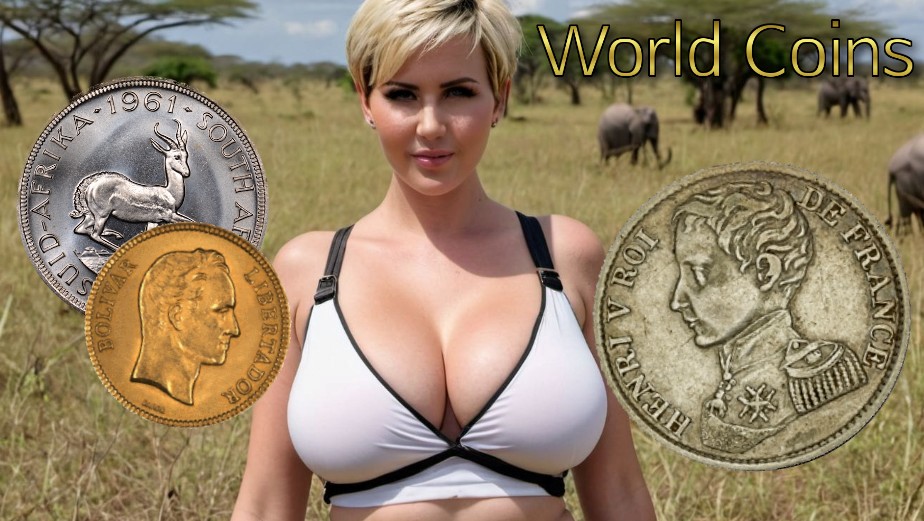
The World's Rarest and Most Valuable Coins
11K views · Apr 22, 2024 findrarecoins.com
The world of numismatics is filled with fascinating stories of rarity and value. While the exact rankings may vary depending on factors like condition and demand, here are some coins that are widely considered among the rarest and most valuable: 1849 Double Eagle ($20 Gold Piece): This coin is considered one of the rarest and most valuable in the world. Only a single example is known to exist, making it highly sought after by collectors. 1913 Liberty Head Nickel: Five examples of this coin are known to exist. It's believed that they were struck illegally, as no Liberty Head Nickels were officially minted in 1913. 1804 Silver Dollar: Despite bearing the date 1804, these coins were actually struck several years later for diplomatic purposes. Only 15 examples are known to exist, making them extremely valuable. 1894-S Barber Dime: This dime is exceptionally rare, with only nine known examples. It's highly coveted by collectors of U.S. coins. 1933 Double Eagle ($20 Gold Piece): While over 400,000 of these coins were minted, most were melted down before they could be released to the public. Only a handful are believed to have survived, and they are illegal to own except for one that was sold at auction in 2002 after a legal battle with the U.S. government. 1343 Edward III Florin: This English coin is one of the oldest and rarest in the world. Only three examples are known to exist, and they are highly prized by collectors of medieval coins. 1794 Flowing Hair Silver Dollar: The first silver dollar issued by the United States Mint, this coin is extremely rare with only about 130 believed to still exist. It holds significant historical and numismatic value. 1889 Coiled Hair Stella: This pattern coin was never officially released for circulation and only a handful of specimens were struck. It's highly sought after by collectors of U.S. coins. 1933 Saint-Gaudens Double Eagle ($20 Gold Piece): Like its counterpart, the 1933 Double Eagle, this coin is exceedingly rare due to most of them being melted down. However, a few examples have surfaced over the years, including one that sold for over $7 million at auction. These coins represent just a fraction of the rare and valuable pieces that exist in the world of coin collecting. Each one has its own unique history and allure that make them highly sought after by collectors.

The World's Rarest and Most Valuable Coins
11K views · Apr 22, 2024 findrarecoins.com
The world of numismatics is filled with fascinating stories of rarity and value. While the exact rankings may vary depending on factors like condition and demand, here are some coins that are widely considered among the rarest and most valuable: 1849 Double Eagle ($20 Gold Piece): This coin is considered one of the rarest and most valuable in the world. Only a single example is known to exist, making it highly sought after by collectors. 1913 Liberty Head Nickel: Five examples of this coin are known to exist. It's believed that they were struck illegally, as no Liberty Head Nickels were officially minted in 1913. 1804 Silver Dollar: Despite bearing the date 1804, these coins were actually struck several years later for diplomatic purposes. Only 15 examples are known to exist, making them extremely valuable. 1894-S Barber Dime: This dime is exceptionally rare, with only nine known examples. It's highly coveted by collectors of U.S. coins. 1933 Double Eagle ($20 Gold Piece): While over 400,000 of these coins were minted, most were melted down before they could be released to the public. Only a handful are believed to have survived, and they are illegal to own except for one that was sold at auction in 2002 after a legal battle with the U.S. government. 1343 Edward III Florin: This English coin is one of the oldest and rarest in the world. Only three examples are known to exist, and they are highly prized by collectors of medieval coins. 1794 Flowing Hair Silver Dollar: The first silver dollar issued by the United States Mint, this coin is extremely rare with only about 130 believed to still exist. It holds significant historical and numismatic value. 1889 Coiled Hair Stella: This pattern coin was never officially released for circulation and only a handful of specimens were struck. It's highly sought after by collectors of U.S. coins. 1933 Saint-Gaudens Double Eagle ($20 Gold Piece): Like its counterpart, the 1933 Double Eagle, this coin is exceedingly rare due to most of them being melted down. However, a few examples have surfaced over the years, including one that sold for over $7 million at auction. These coins represent just a fraction of the rare and valuable pieces that exist in the world of coin collecting. Each one has its own unique history and allure that make them highly sought after by collectors.
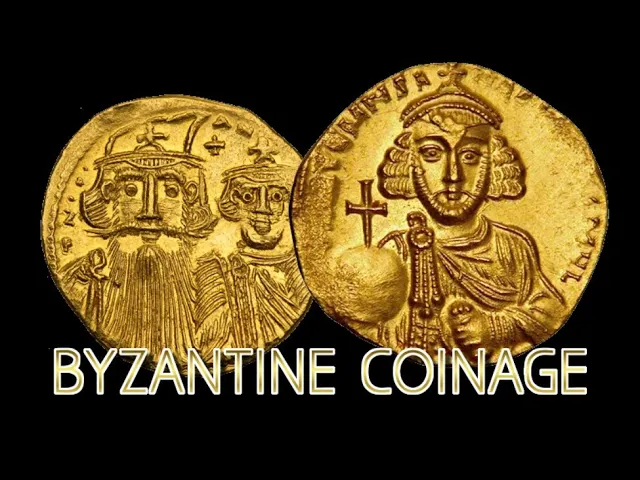
The Gold Solidus and Christianity: Exploring Byzantine Coina...
8K views · Apr 21, 2024 findrarecoins.com
Welcome to our exploration of Byzantine money, a cornerstone of the Eastern Roman Empire's economy and culture from three hundred to fourteen hundred A.D. Today, we'll delve into the fascinating world of Byzantine coinage, its significance, and the profound influence of Christianity on its designs. The Byzantine Empire, also known as the Eastern Roman Empire, was established with the founding of Constantinople by Emperor Constantine the Great in three hundred thirty A.D. This marked a pivotal shift in Roman power from west to east. The primary currency during this era was the gold solidus. Renowned for its high purity and stability, the solidus featured various emperors and, notably, the Christian symbol of the cross. This inclusion reflected Christianity's deep-rooted influence on Byzantine society.

History of the United States Dime
9K views · Mar 22, 2024 findrarecoins.com
The one-tenth of a dollar coin, commonly known as the dime, holds a significant place in American numismatics. Like the half dime, the dime was authorized by the Coinage Act of 1792, and over the years, it has undergone various transformations in design and historical significance. In this detailed exploration, we will delve into the intricate history, specifications, and cultural significance of the dime, ultimately revealing how this small coin has made a big impact in the United States.

The World's Rarest and Most Valuable Coins
11K views · Apr 22, 2024 findrarecoins.com
The world of numismatics is filled with fascinating stories of rarity and value. While the exact rankings may vary depending on factors like condition and demand, here are some coins that are widely considered among the rarest and most valuable: 1849 Double Eagle ($20 Gold Piece): This coin is considered one of the rarest and most valuable in the world. Only a single example is known to exist, making it highly sought after by collectors. 1913 Liberty Head Nickel: Five examples of this coin are known to exist. It's believed that they were struck illegally, as no Liberty Head Nickels were officially minted in 1913. 1804 Silver Dollar: Despite bearing the date 1804, these coins were actually struck several years later for diplomatic purposes. Only 15 examples are known to exist, making them extremely valuable. 1894-S Barber Dime: This dime is exceptionally rare, with only nine known examples. It's highly coveted by collectors of U.S. coins. 1933 Double Eagle ($20 Gold Piece): While over 400,000 of these coins were minted, most were melted down before they could be released to the public. Only a handful are believed to have survived, and they are illegal to own except for one that was sold at auction in 2002 after a legal battle with the U.S. government. 1343 Edward III Florin: This English coin is one of the oldest and rarest in the world. Only three examples are known to exist, and they are highly prized by collectors of medieval coins. 1794 Flowing Hair Silver Dollar: The first silver dollar issued by the United States Mint, this coin is extremely rare with only about 130 believed to still exist. It holds significant historical and numismatic value. 1889 Coiled Hair Stella: This pattern coin was never officially released for circulation and only a handful of specimens were struck. It's highly sought after by collectors of U.S. coins. 1933 Saint-Gaudens Double Eagle ($20 Gold Piece): Like its counterpart, the 1933 Double Eagle, this coin is exceedingly rare due to most of them being melted down. However, a few examples have surfaced over the years, including one that sold for over $7 million at auction. These coins represent just a fraction of the rare and valuable pieces that exist in the world of coin collecting. Each one has its own unique history and allure that make them highly sought after by collectors.

Gold Investment Essentials Bullion and Coins Explained
3K views · Apr 23, 2024 findrarecoins.com
Investing in gold bullion and coins can be a prudent way to diversify your investment portfolio and hedge against economic uncertainties. Here's a detailed guide on the best ways to invest in gold bullion and coins: Understand the Types of Gold Investments: Bullion: Refers to gold bars or ingots, usually in high purity (e.g., 99.99% pure). These are typically bought and sold based on their weight and purity. Coins: Gold coins come in various sizes and designs, ranging from small fractions of an ounce to one ounce or more. Some coins are produced by government mints and have legal tender status, while others are produced by private mints. Determine Your Investment Goals: Understand why you're investing in gold. Is it for portfolio diversification, wealth preservation, or speculation? Your goals will influence your investment strategy. Research Market Trends and Gold Prices: Stay informed about the factors influencing gold prices, such as economic indicators, geopolitical tensions, inflation rates, and currency movements. Historical price data and technical analysis can also provide insights. Choose a Reputable Seller: When buying gold bullion and coins, choose reputable dealers or brokers to ensure authenticity and reliability. Look for dealers accredited by professional organizations like the Professional Numismatists Guild (PNG) or the American Numismatic Association (ANA). Consider Storage Options: Decide whether you'll store your gold at home, in a bank safe deposit box, or with a third-party storage provider. Each option has its pros and cons in terms of security, accessibility, and cost. Diversify Your Holdings: Consider diversifying your gold holdings across different types of bullion and coins, as well as other precious metals like silver and platinum. Diversification helps spread risk and optimize returns. Beware of Counterfeits: Be vigilant against counterfeit gold products. Inspect the appearance, weight, and purity of bullion and coins before purchasing. Buy from reputable sources and consider investing in products with authentication features like serial numbers or tamper-evident packaging. Factor in Transaction Costs: Keep in mind the transaction costs associated with buying and selling gold, such as dealer markups, shipping fees, storage costs, and taxes. Factor these costs into your investment decisions to assess the overall profitability. Monitor Your Investments: Regularly review your gold investments and adjust your portfolio as needed based on changes in market conditions, your financial goals, and risk tolerance. Consider consulting with financial advisors or precious metals experts for guidance. Be Patient and Disciplined: Gold prices can be volatile in the short term, so it's essential to maintain a long-term perspective and avoid making impulsive decisions based on short-term fluctuations. Stick to your investment plan and remain disciplined in your approach. By following these guidelines, you can navigate the gold market effectively and make informed decisions when investing in bullion and coins. Remember that gold is just one component of a well-rounded investment portfolio, and it should be balanced with other asset classes to achieve optimal diversification and risk management.

Gold Investment Essentials Bullion and Coins Explained
3K views · Apr 23, 2024 findrarecoins.com
Investing in gold bullion and coins can be a prudent way to diversify your investment portfolio and hedge against economic uncertainties. Here's a detailed guide on the best ways to invest in gold bullion and coins: Understand the Types of Gold Investments: Bullion: Refers to gold bars or ingots, usually in high purity (e.g., 99.99% pure). These are typically bought and sold based on their weight and purity. Coins: Gold coins come in various sizes and designs, ranging from small fractions of an ounce to one ounce or more. Some coins are produced by government mints and have legal tender status, while others are produced by private mints. Determine Your Investment Goals: Understand why you're investing in gold. Is it for portfolio diversification, wealth preservation, or speculation? Your goals will influence your investment strategy. Research Market Trends and Gold Prices: Stay informed about the factors influencing gold prices, such as economic indicators, geopolitical tensions, inflation rates, and currency movements. Historical price data and technical analysis can also provide insights. Choose a Reputable Seller: When buying gold bullion and coins, choose reputable dealers or brokers to ensure authenticity and reliability. Look for dealers accredited by professional organizations like the Professional Numismatists Guild (PNG) or the American Numismatic Association (ANA). Consider Storage Options: Decide whether you'll store your gold at home, in a bank safe deposit box, or with a third-party storage provider. Each option has its pros and cons in terms of security, accessibility, and cost. Diversify Your Holdings: Consider diversifying your gold holdings across different types of bullion and coins, as well as other precious metals like silver and platinum. Diversification helps spread risk and optimize returns. Beware of Counterfeits: Be vigilant against counterfeit gold products. Inspect the appearance, weight, and purity of bullion and coins before purchasing. Buy from reputable sources and consider investing in products with authentication features like serial numbers or tamper-evident packaging. Factor in Transaction Costs: Keep in mind the transaction costs associated with buying and selling gold, such as dealer markups, shipping fees, storage costs, and taxes. Factor these costs into your investment decisions to assess the overall profitability. Monitor Your Investments: Regularly review your gold investments and adjust your portfolio as needed based on changes in market conditions, your financial goals, and risk tolerance. Consider consulting with financial advisors or precious metals experts for guidance. Be Patient and Disciplined: Gold prices can be volatile in the short term, so it's essential to maintain a long-term perspective and avoid making impulsive decisions based on short-term fluctuations. Stick to your investment plan and remain disciplined in your approach. By following these guidelines, you can navigate the gold market effectively and make informed decisions when investing in bullion and coins. Remember that gold is just one component of a well-rounded investment portfolio, and it should be balanced with other asset classes to achieve optimal diversification and risk management.
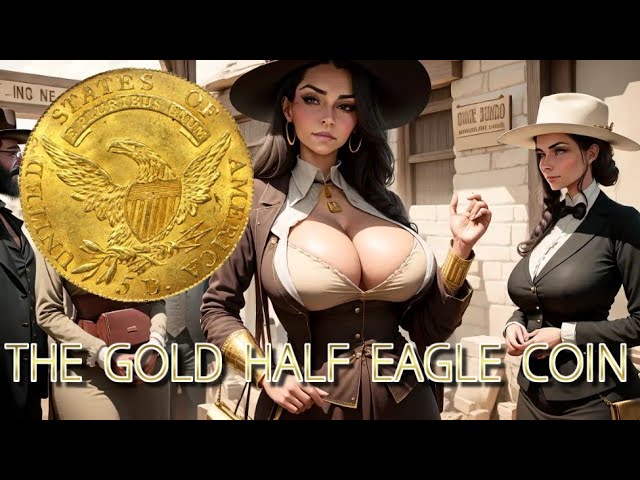
The Evolution of the $5 Gold Coin: A Journey Through U.S. Hi...
1K views · Mar 29, 2024 findrarecoins.com
The $5 gold coin, also known as the Half Eagle, holds a significant place in United States numismatic history. Here's a brief overview of its evolution from 1795 to 2024: The first $5 gold coin was minted in 1795, featuring a bust of Liberty facing right on the obverse and an eagle on the reverse. Designs and variations changed over time, with different renditions of Liberty and various eagle motifs. During this period, the coin underwent modifications in weight and fineness due to fluctuations in the price of gold. The Capped Bust design was introduced in 1807 and is a fascinating piece of American numismatic history. The Capped Bust motif, designed by John Reich, graces the 1807 half eagle. On the obverse, a buxom Miss Liberty faces left, adorned with a cloth cap inscribed “LIBERTY.” Her curly hair flows from the cap down to her shoulder. The reverse features an eagle with outstretched wings, clutching an olive branch and arrows. The denomination “5 D.” (for $5) appears below the eagle. The Capped Bust $5 gold coins were minted during a period of significant change in American history. These coins circulated during the early 19th century, witnessing events like the War of 1812 and the expansion of the United States. In 1834, the Classic Head designed by William Kneass was introduced, featuring Liberty wearing a headband inscribed with "Liberty." On the reverse, you’ll find an eagle with outstretched wings, standing on a bundle of arrows and an olive branch. The weight and fineness of gold in these coins were standardized during this period. The Liberty Head design, commonly referred to as the Coronet Head, was introduced in 1839 and continued until 1908. Designed by Christian Gobrecht, these coins featured a left-facing Liberty wearing a coronet inscribed with “Liberty.” Variations included changes to the diameter and minor modifications to the design over the years. The Indian Head design, also known as the Indian Head Eagle, was introduced in 1908. Designed by Augustus Saint-Gaudens, the obverse featured a Native American chief in a full headdress, while the reverse depicted a standing eagle. This design is often regarded as one of the most beautiful in American coinage history. Production ceased in 1929 due to the economic turmoil of the Great Depression. In 1986, the United States Mint began issuing modern commemorative $5 gold coins as part of various programs, honoring historical events, figures, and institutions. These modern commemoratives often feature unique designs on both the obverse and reverse, celebrating themes ranging from the Olympics to national parks and historic anniversaries. Throughout its history, the $5 gold coin has seen changes in design, composition, and purpose. While no longer circulated for general use, these coins hold significant value to collectors and investors alike, both for their historical importance and intrinsic worth. Visit: https://findrarecoins.com/gold-half-eagle-coins/
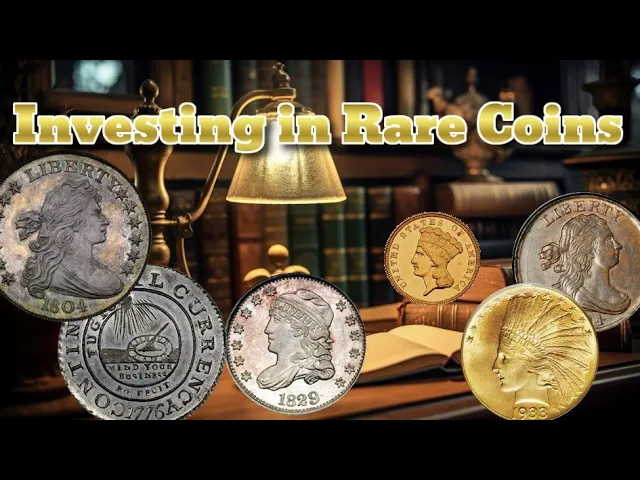
Investing in Coins
370 views · Apr 29, 2024 findrarecoins.com
The journey into the world of rare coins is one marked by an appreciation for history and a sense for investment opportunities. This narrative explores the interplay between scarcity, historical significance, and the art of numismatics, setting the stage for a comprehensive look at what makes these coins valuable. Investing in rare coins combines owning a piece of history with recognizing potential value. It involves spotting the standouts among many options, considering rarity, errors, and historical significance. Key Rare Coins for Investment Let's examine a few rare coins that shine in the world of numismatic investments, offering a blend of rarity, historical interest, and potential value. The 1909-S V.D.B. Lincoln Cent is notable for its scarce initial mintage and the story of its engraver's initials being removed. This penny is a key part of American coinage history. The 1914-D Lincoln Cent, while less storied in production anomalies, is valued for its sheer scarcity. Minted in a year when the world was on the brink of global conflict, its limited numbers make it a collector's prize. The 1937-D 3-Legged Buffalo Nickel is a coin that turns an error into a selling point. The accidental removal of one of the buffalos' legs result in a rare and sought-after piece. Each of these coins represents a facet of what makes a coin collectable and a potential investment. Their rarity, historical context, and demonstrated appreciation potential showcase why they stand out. Investing in rare coins combines an interest in history with financial considerations. With knowledge and an eye for detail, an investor can find opportunities that are intellectually and financially rewarding.

Investing in Coins
370 views · Apr 29, 2024 findrarecoins.com
The journey into the world of rare coins is one marked by an appreciation for history and a sense for investment opportunities. This narrative explores the interplay between scarcity, historical significance, and the art of numismatics, setting the stage for a comprehensive look at what makes these coins valuable. Investing in rare coins combines owning a piece of history with recognizing potential value. It involves spotting the standouts among many options, considering rarity, errors, and historical significance. Key Rare Coins for Investment Let's examine a few rare coins that shine in the world of numismatic investments, offering a blend of rarity, historical interest, and potential value. The 1909-S V.D.B. Lincoln Cent is notable for its scarce initial mintage and the story of its engraver's initials being removed. This penny is a key part of American coinage history. The 1914-D Lincoln Cent, while less storied in production anomalies, is valued for its sheer scarcity. Minted in a year when the world was on the brink of global conflict, its limited numbers make it a collector's prize. The 1937-D 3-Legged Buffalo Nickel is a coin that turns an error into a selling point. The accidental removal of one of the buffalos' legs result in a rare and sought-after piece. Each of these coins represents a facet of what makes a coin collectable and a potential investment. Their rarity, historical context, and demonstrated appreciation potential showcase why they stand out. Investing in rare coins combines an interest in history with financial considerations. With knowledge and an eye for detail, an investor can find opportunities that are intellectually and financially rewarding.
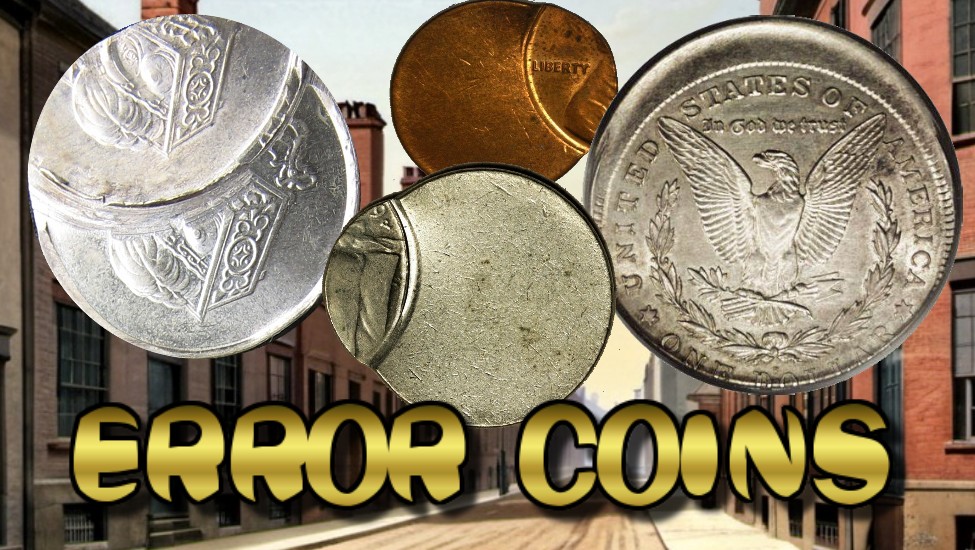
Unearthing Treasures: A Journey Through the History and Coll...
812 views · May 1, 2024 findrarecoins.com
Error coins are a fascinating aspect of numismatics, the study and collection of coins. They are coins that deviate from their intended design or production process, resulting in unique characteristics that make them distinct from regular coins. These errors can occur at various stages of coin production, including during the design phase, the striking process, or the handling and finishing stages. Here are some common types of error coins: Planchet Errors: These errors occur when the metal disk (planchet) used to strike a coin is flawed in some way. This can include planchets that are too thin or thick, improperly alloyed, or have cracks, clips, or laminations. These errors can result in coins that are underweight, overweight, or have irregular shapes. Die Errors: Die errors happen when there is a problem with the dies used to strike the coins. This can include issues like die cracks, die breaks, clashed dies (where the obverse and reverse designs clash), or die deterioration. These errors can cause anomalies in the design or details of the struck coin. Striking Errors: Striking errors occur during the actual minting process. They can include off-center strikes, double strikes (where the coin is struck more than once), and broad strikes (where the coin is struck without being fully contained by the collar). These errors often result in coins with distorted or incomplete designs. Off-Metal Errors: Off-metal errors happen when a coin is struck on a planchet composed of a metal different from what was intended. For example, a nickel may be struck on a planchet intended for a cent. These errors are particularly rare and highly sought after by collectors. Design Errors: Design errors occur when there are mistakes or variations in the coin's design. This could include missing or misplaced mint marks, doubled dies (where the design appears doubled due to an error in the die-making process), or other anomalies in the design elements. Error coins are often highly sought after by collectors due to their rarity and uniqueness. The value of an error coin depends on factors such as the type and severity of the error, the coin's rarity, its condition, and demand from collectors. Some error coins can command significant premiums, especially if they are well-known or particularly unusual. However, not all error coins are valuable, and some may only be of interest to specialized collectors or enthusiasts. See More Error Coins Here ► https://findrarecoins.com/error-coins/
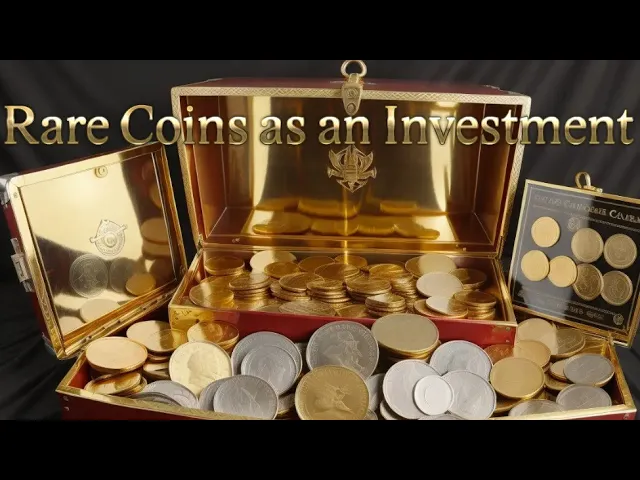
Exploring the Potential of Rare Coins as an Investment
3K views · May 10, 2024 findrarecoins.com
Throughout history, rare coins have exhibited remarkable profit potential, transcending the mere material worth of the metal they're composed of. According to insights from Finest Known, a renowned rare-coin newsletter, elite coins saw their prices skyrocket, with appreciation rates exceeding 1,000% from 1976 to 1980 and 600% from 1982 to 1989. Over the past few decades, the landscape of the rare-coin market has undergone significant transformations. The advent of third-party grading services in the 1980s revolutionized coin grading, mitigating some of the risks associated with investments in this domain. Moreover, the proliferation of the internet has democratized access to knowledge concerning coin collecting, rare coins, and the art of acquiring them. For novices delving into the realm of rare-coin investment, seeking guidance from a n experienced collector can prove invaluable. Mentors can assist in navigating the intricacies of researching the present and potential future value of coins. Additionally, individuals can immerse themselves in this sphere by attending coin shows, perusing literature, engaging with coin dealers, and becoming members of coin clubs. Similar to any investment venture, diversifying one's coin portfolio is key to minimizing exposure to market fluctuations and maximizing potential returns. Incorporating a variety of U.S. coins, as well as precious metals like gold bullion coins and classic gold coins such as the double eagle, enhances portfolio resilience. It's worth noting that rare-coin investment is not geared toward short-term gains. While coin flipping—a strategy centered on swift turnaround for profit—exists, it entails inherent risks. Engaging in coin flipping involves acquiring low-mintage coins directly from the mint with the aim of promptly selling them for a higher price. However, failure to capitalize on selling opportunities or an oversaturated market can lead to financial losses. The rare-coin market is not immune to fluctuations; indeed, it can be subject to volatility. Coin valuations are contingent upon the principles of supply and demand. A surge in demand for a particular coin or series can drive prices skyward, only to witness a subsequent decline if interest wanes. Unlike the uniformity of company shares, rare coins possess unique attributes. Even coins sharing identical variations and grades may command different valuations due to nuanced discrepancies, such as variations in appearance. This inherent distinctiveness renders rare-coin investment inherently unpredictable. Embarking on a journey into rare-coin investment necessitates acquainting oneself with valuation methodologies. Seeking mentorship, consulting literature, attending coin shows, and participating in coin clubs are effective avenues for acquiring such knowledge. While rare coins typically appreciate in value over the long term, it's essential to acknowledge the absence of guarantees regarding future valuation trajectories. In contrast to purchasing stocks through established brokers, delving into rare-coin investment entails a degree of complexity. Vigilance against counterfeit or tampered coins is paramount, as these can undermine the integrity of one's investment. Opting for coins certified by reputable entities like the Professional Coin Grading Service (PCGS) or Numismatic Guaranty Co. (NGC) enhances both security and marketability. Rare-coin investment holds the promise of not only an engaging hobby but also a potentially lucrative avenue for long-term financial growth within a well-rounded investment portfolio. Visit: https://findrarecoins.com/

How to Value Your Coins
5K views · May 16, 2024 findrarecoins.com
Finding the accurate value for your coins can be an intriguing and rewarding endeavor, especially if you have a collection or inherited coins with potential historical or numismatic significance. Here's a step-by-step guide on how to find an accurate value for your coins: 1. **Organize Your Collection**: Start by sorting your coins into categories based on their type, denomination, country of origin, and year of minting. Organizing your collection makes it easier to research and evaluate each coin. 2. **Identify Your Coins**: Once organized, identify each coin accurately. Note down information such as the country of origin, denomination, year of minting, and any distinguishing features like mint marks or special designs. 3. **Research**: Utilize various resources to research the value of your coins. Here are some effective methods: - **Numismatic Books**: Invest in numismatic books or visit your local library to find literature on coin collecting and valuation. Books often contain detailed information about different coins and their market values. - **Online Databases**: Explore online coin databases and resources. Websites like Numista, PCGS (Professional Coin Grading Service), NGC (Numismatic Guaranty Corporation), and Heritage Auctions provide valuable information on coin values, historical background, and recent auction prices. - **Coin Forums and Communities**: Join online forums or communities dedicated to coin collecting. These platforms allow you to interact with experienced collectors and experts who can provide insights and guidance on valuing your coins. - **Auction Records**: Look up recent auction records for similar coins. Websites like eBay, Heritage Auctions, and Stack's Bowers Galleries provide access to past auction results, helping you gauge the market value of your coins. - **Professional Appraisers**: Consider consulting professional coin appraisers or dealers for an expert opinion. They possess extensive knowledge and experience in coin valuation and can provide accurate assessments based on current market trends. 4. **Condition Assessment**: Evaluate the condition of your coins carefully. Numismatic value can vary significantly based on factors such as mint state, wear and tear, surface preservation, and overall appearance. Use grading scales such as the Sheldon Scale (for U.S. coins) or the International Grading Standards to assess the condition accurately. 5. **Consider Rarity and Demand**: Take into account the rarity and demand for your coins. Rare coins or those with high collector demand often command higher prices in the market. Factors such as mintage figures, historical significance, and aesthetic appeal can influence the desirability and value of a coin. 6. **Get Multiple Opinions**: To ensure accuracy, seek multiple opinions on the value of your coins. Compare the information gathered from different sources and experts to arrive at a well-informed valuation. 7. **Keep Updated**: The coin market is dynamic, with prices fluctuating based on various factors such as economic conditions, collector trends, and historical events. Stay updated with the latest news and developments in the numismatic world to make informed decisions about your coin collection. 8. **Document and Protect Your Collection**: Once you have determined the value of your coins, document your findings and keep detailed records of your collection. Store your coins in protective holders or albums to prevent damage and preserve their condition over time. By following these steps and utilizing a combination of research methods and expert opinions, you can find an accurate value for your coins and gain a deeper appreciation for your collection's worth and significance. Visit: https://findrarecoins.com/coin-prices/

How to Value Your Coins
5K views · May 16, 2024 findrarecoins.com
Finding the accurate value for your coins can be an intriguing and rewarding endeavor, especially if you have a collection or inherited coins with potential historical or numismatic significance. Here's a step-by-step guide on how to find an accurate value for your coins: 1. **Organize Your Collection**: Start by sorting your coins into categories based on their type, denomination, country of origin, and year of minting. Organizing your collection makes it easier to research and evaluate each coin. 2. **Identify Your Coins**: Once organized, identify each coin accurately. Note down information such as the country of origin, denomination, year of minting, and any distinguishing features like mint marks or special designs. 3. **Research**: Utilize various resources to research the value of your coins. Here are some effective methods: - **Numismatic Books**: Invest in numismatic books or visit your local library to find literature on coin collecting and valuation. Books often contain detailed information about different coins and their market values. - **Online Databases**: Explore online coin databases and resources. Websites like Numista, PCGS (Professional Coin Grading Service), NGC (Numismatic Guaranty Corporation), and Heritage Auctions provide valuable information on coin values, historical background, and recent auction prices. - **Coin Forums and Communities**: Join online forums or communities dedicated to coin collecting. These platforms allow you to interact with experienced collectors and experts who can provide insights and guidance on valuing your coins. - **Auction Records**: Look up recent auction records for similar coins. Websites like eBay, Heritage Auctions, and Stack's Bowers Galleries provide access to past auction results, helping you gauge the market value of your coins. - **Professional Appraisers**: Consider consulting professional coin appraisers or dealers for an expert opinion. They possess extensive knowledge and experience in coin valuation and can provide accurate assessments based on current market trends. 4. **Condition Assessment**: Evaluate the condition of your coins carefully. Numismatic value can vary significantly based on factors such as mint state, wear and tear, surface preservation, and overall appearance. Use grading scales such as the Sheldon Scale (for U.S. coins) or the International Grading Standards to assess the condition accurately. 5. **Consider Rarity and Demand**: Take into account the rarity and demand for your coins. Rare coins or those with high collector demand often command higher prices in the market. Factors such as mintage figures, historical significance, and aesthetic appeal can influence the desirability and value of a coin. 6. **Get Multiple Opinions**: To ensure accuracy, seek multiple opinions on the value of your coins. Compare the information gathered from different sources and experts to arrive at a well-informed valuation. 7. **Keep Updated**: The coin market is dynamic, with prices fluctuating based on various factors such as economic conditions, collector trends, and historical events. Stay updated with the latest news and developments in the numismatic world to make informed decisions about your coin collection. 8. **Document and Protect Your Collection**: Once you have determined the value of your coins, document your findings and keep detailed records of your collection. Store your coins in protective holders or albums to prevent damage and preserve their condition over time. By following these steps and utilizing a combination of research methods and expert opinions, you can find an accurate value for your coins and gain a deeper appreciation for your collection's worth and significance. Visit: https://findrarecoins.com/coin-prices/

How to Value Your Coins
5K views · May 16, 2024 findrarecoins.com
Finding the accurate value for your coins can be an intriguing and rewarding endeavor, especially if you have a collection or inherited coins with potential historical or numismatic significance. Here's a step-by-step guide on how to find an accurate value for your coins: 1. **Organize Your Collection**: Start by sorting your coins into categories based on their type, denomination, country of origin, and year of minting. Organizing your collection makes it easier to research and evaluate each coin. 2. **Identify Your Coins**: Once organized, identify each coin accurately. Note down information such as the country of origin, denomination, year of minting, and any distinguishing features like mint marks or special designs. 3. **Research**: Utilize various resources to research the value of your coins. Here are some effective methods: - **Numismatic Books**: Invest in numismatic books or visit your local library to find literature on coin collecting and valuation. Books often contain detailed information about different coins and their market values. - **Online Databases**: Explore online coin databases and resources. Websites like Numista, PCGS (Professional Coin Grading Service), NGC (Numismatic Guaranty Corporation), and Heritage Auctions provide valuable information on coin values, historical background, and recent auction prices. - **Coin Forums and Communities**: Join online forums or communities dedicated to coin collecting. These platforms allow you to interact with experienced collectors and experts who can provide insights and guidance on valuing your coins. - **Auction Records**: Look up recent auction records for similar coins. Websites like eBay, Heritage Auctions, and Stack's Bowers Galleries provide access to past auction results, helping you gauge the market value of your coins. - **Professional Appraisers**: Consider consulting professional coin appraisers or dealers for an expert opinion. They possess extensive knowledge and experience in coin valuation and can provide accurate assessments based on current market trends. 4. **Condition Assessment**: Evaluate the condition of your coins carefully. Numismatic value can vary significantly based on factors such as mint state, wear and tear, surface preservation, and overall appearance. Use grading scales such as the Sheldon Scale (for U.S. coins) or the International Grading Standards to assess the condition accurately. 5. **Consider Rarity and Demand**: Take into account the rarity and demand for your coins. Rare coins or those with high collector demand often command higher prices in the market. Factors such as mintage figures, historical significance, and aesthetic appeal can influence the desirability and value of a coin. 6. **Get Multiple Opinions**: To ensure accuracy, seek multiple opinions on the value of your coins. Compare the information gathered from different sources and experts to arrive at a well-informed valuation. 7. **Keep Updated**: The coin market is dynamic, with prices fluctuating based on various factors such as economic conditions, collector trends, and historical events. Stay updated with the latest news and developments in the numismatic world to make informed decisions about your coin collection. 8. **Document and Protect Your Collection**: Once you have determined the value of your coins, document your findings and keep detailed records of your collection. Store your coins in protective holders or albums to prevent damage and preserve their condition over time. By following these steps and utilizing a combination of research methods and expert opinions, you can find an accurate value for your coins and gain a deeper appreciation for your collection's worth and significance. Visit: https://findrarecoins.com/coin-prices/

How to Find the Best Deals When Buying Coins Online
388 views · Jun 22, 2024 findrarecoins.com
Are you looking to expand your coin collection but unsure where to start? Here are the best strategies for buying coins online. https://findrarecoins.com/strategies-for-buying-coins-online/

How to Find the Best Deals When Buying Coins Online
388 views · Jun 22, 2024 findrarecoins.com
Are you looking to expand your coin collection but unsure where to start? Here are the best strategies for buying coins online. https://findrarecoins.com/strategies-for-buying-coins-online/
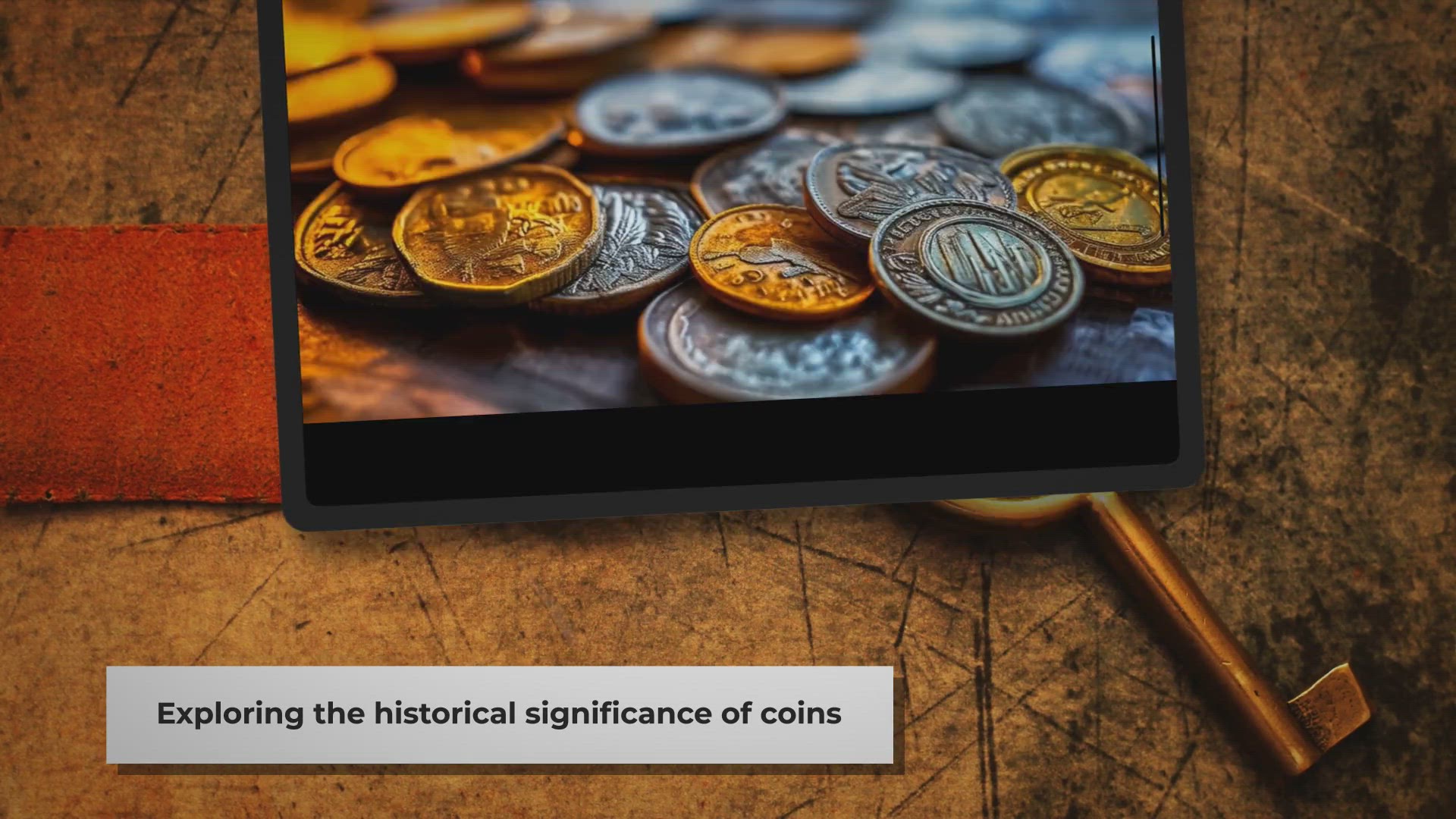
Uncovering the Captivating World of Coin Collecting
4K views · Jul 23, 2024 findrarecoins.com
Explore the fascinating realm of coin collecting, where history, art, and the thrill of the hunt converge. Discover the joy of holding pieces of the past, uncovering unique stories, and building a collection that connects you to the rich tapestry of human history.

Uncovering the Captivating World of Coin Collecting
4K views · Jul 23, 2024 findrarecoins.com
Explore the fascinating realm of coin collecting, where history, art, and the thrill of the hunt converge. Discover the joy of holding pieces of the past, uncovering unique stories, and building a collection that connects you to the rich tapestry of human history.

Exploring the History and Significance of United States Coin...
3K views · Jul 23, 2024 findrarecoins.com
Discover the fascinating story behind the evolution of US coins, from the nation's earliest days to the present. Learn how these small metal discs have played a crucial role in shaping American history and culture.
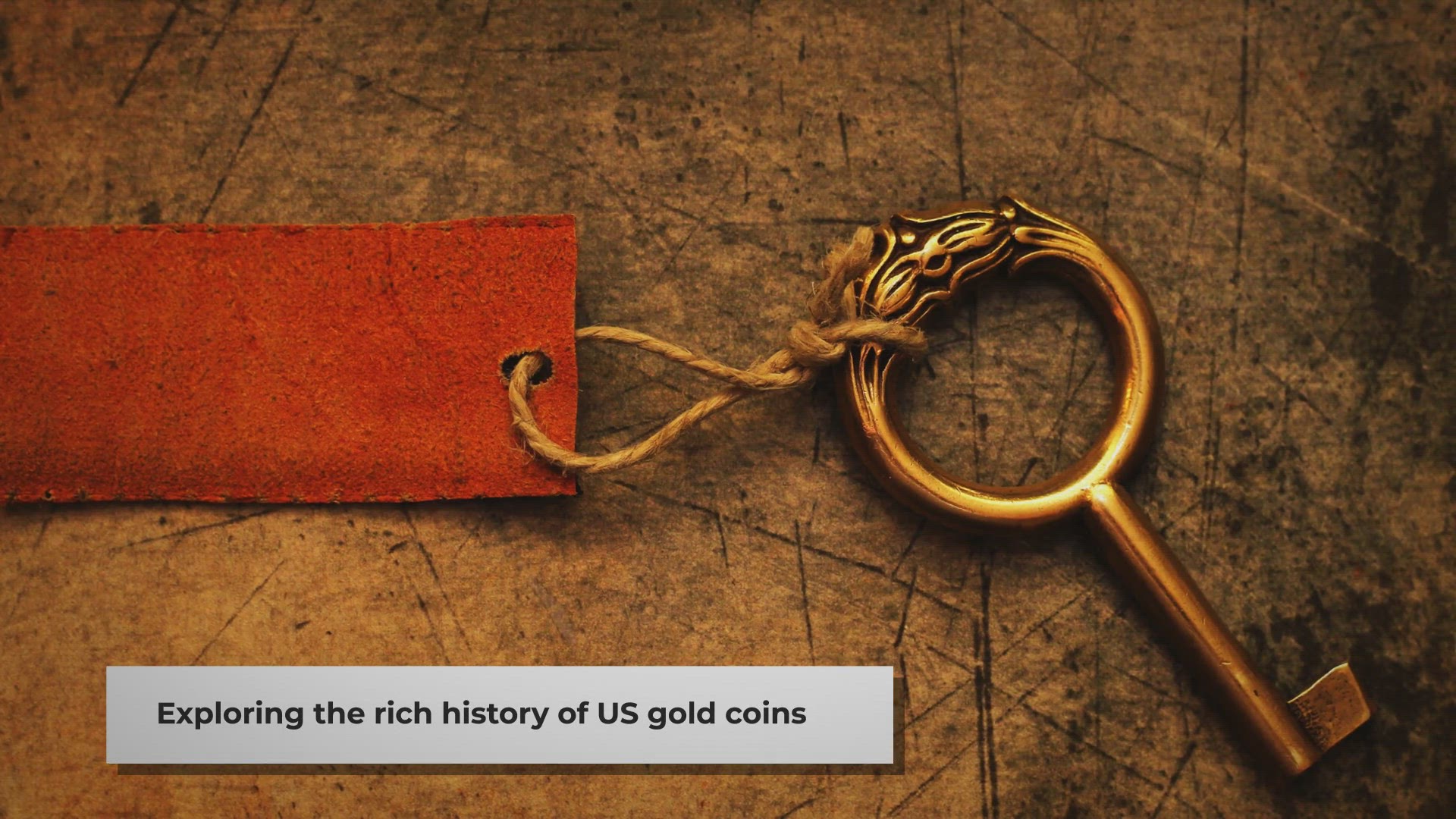
The Glittering Legacy of US Gold Coins
11K views · Jul 23, 2024 findrarecoins.com
Explore the rich history of United States gold coins, from their origins in the late 18th century to their pivotal role during the Civil War. Discover the fascinating stories behind these numismatic treasures and their enduring legacy as symbols of American identity and economic development.

The Glittering Legacy of US Gold Coins
11K views · Jul 23, 2024 findrarecoins.com
Explore the rich history of United States gold coins, from their origins in the late 18th century to their pivotal role during the Civil War. Discover the fascinating stories behind these numismatic treasures and their enduring legacy as symbols of American identity and economic development.

The Glittering Legacy of US Gold Coins
11K views · Jul 23, 2024 findrarecoins.com
Explore the rich history of United States gold coins, from their origins in the late 18th century to their pivotal role during the Civil War. Discover the fascinating stories behind these numismatic treasures and their enduring legacy as symbols of American identity and economic development.

The Glittering Legacy of US Gold Coins
11K views · Jul 23, 2024 findrarecoins.com
Explore the rich history of United States gold coins, from their origins in the late 18th century to their pivotal role during the Civil War. Discover the fascinating stories behind these numismatic treasures and their enduring legacy as symbols of American identity and economic development.
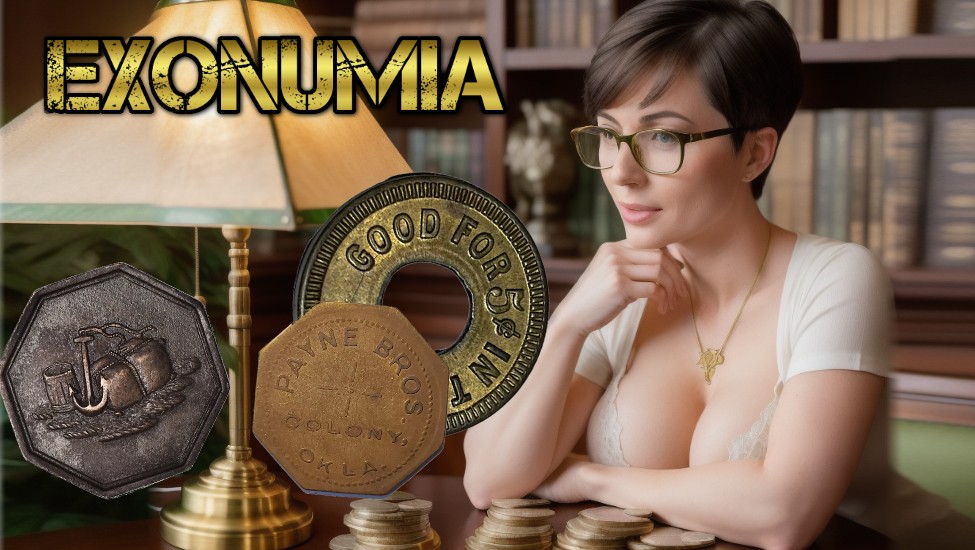
Exonumia_ The History of Non-Traditional Currency
638 views · Sep 23, 2024 findrarecoins.com
Exonumia, a term that encompasses various forms of numismatic items that are not legal tender coins or currency, has a rich and diverse history that spans across different cultures and time periods. The origins of exonumia can be traced back to ancient times when civilizations started using items other than coins for trade and commerce. For instance, in ancient Egypt, small metal tokens, known as "proto-money," were used as a form of exchange for goods and services. These early examples of exonumia were often shaped like animals, tools, or symbols, and served as a medium of exchange within a particular community or region.

Exonumia_ The History of Non-Traditional Currency
638 views · Sep 23, 2024 findrarecoins.com
Exonumia, a term that encompasses various forms of numismatic items that are not legal tender coins or currency, has a rich and diverse history that spans across different cultures and time periods. The origins of exonumia can be traced back to ancient times when civilizations started using items other than coins for trade and commerce. For instance, in ancient Egypt, small metal tokens, known as "proto-money," were used as a form of exchange for goods and services. These early examples of exonumia were often shaped like animals, tools, or symbols, and served as a medium of exchange within a particular community or region.
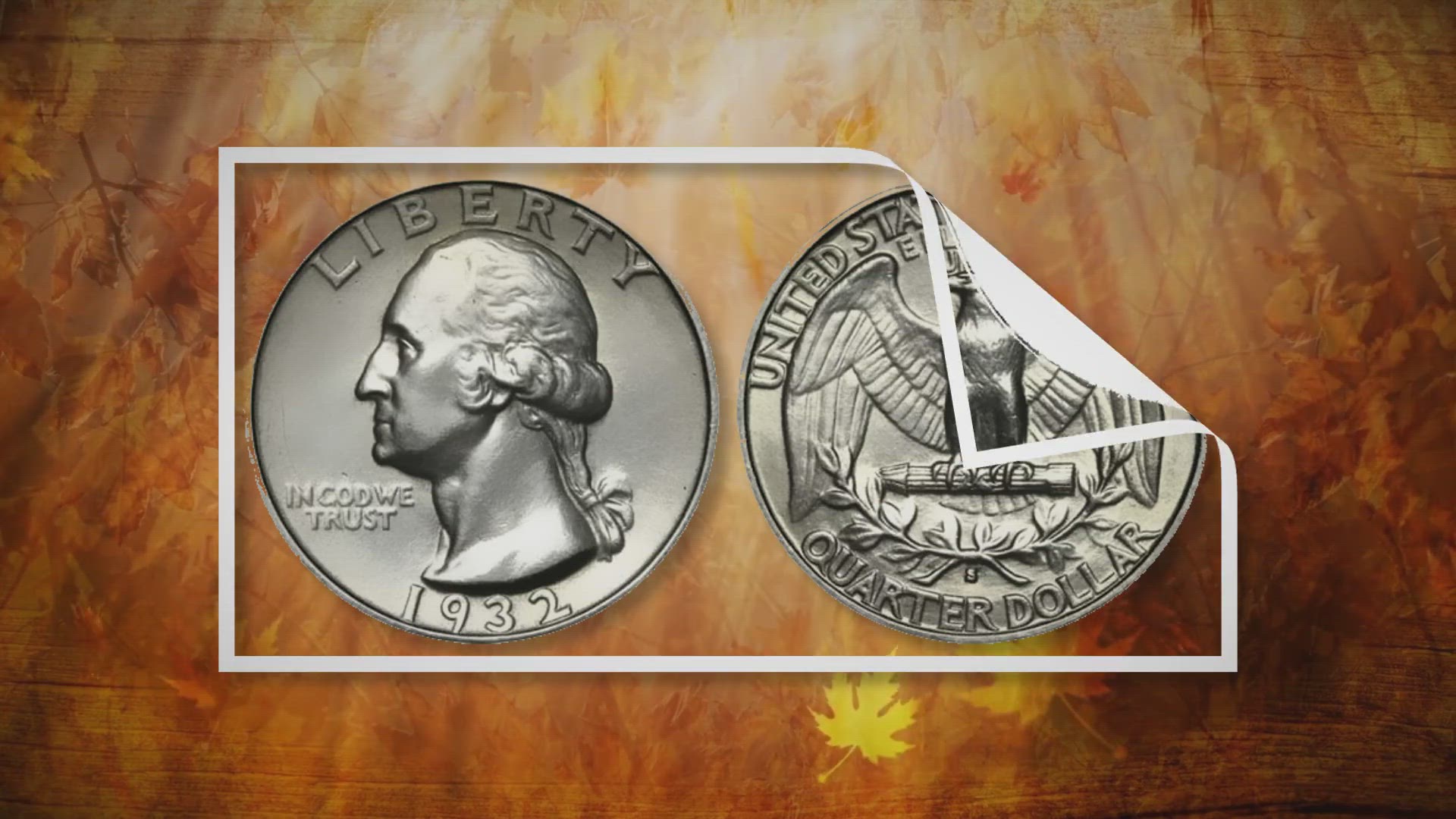
The Quarter's Journey: From Draped Bust to Washington
1K views · Sep 25, 2024 findrarecoins.com
Discover the evolution of the U.S. quarter dollar, from its 1796 debut to today's familiar Washington design. This video covers the coin's various iterations, including the Capped Bust, Seated Liberty, Barber, and Standing Liberty designs, highlighting how this small piece of currency reflects over 200 years of American history.

The Quarter's Journey: From Draped Bust to Washington
1K views · Sep 25, 2024 findrarecoins.com
Discover the evolution of the U.S. quarter dollar, from its 1796 debut to today's familiar Washington design. This video covers the coin's various iterations, including the Capped Bust, Seated Liberty, Barber, and Standing Liberty designs, highlighting how this small piece of currency reflects over 200 years of American history.
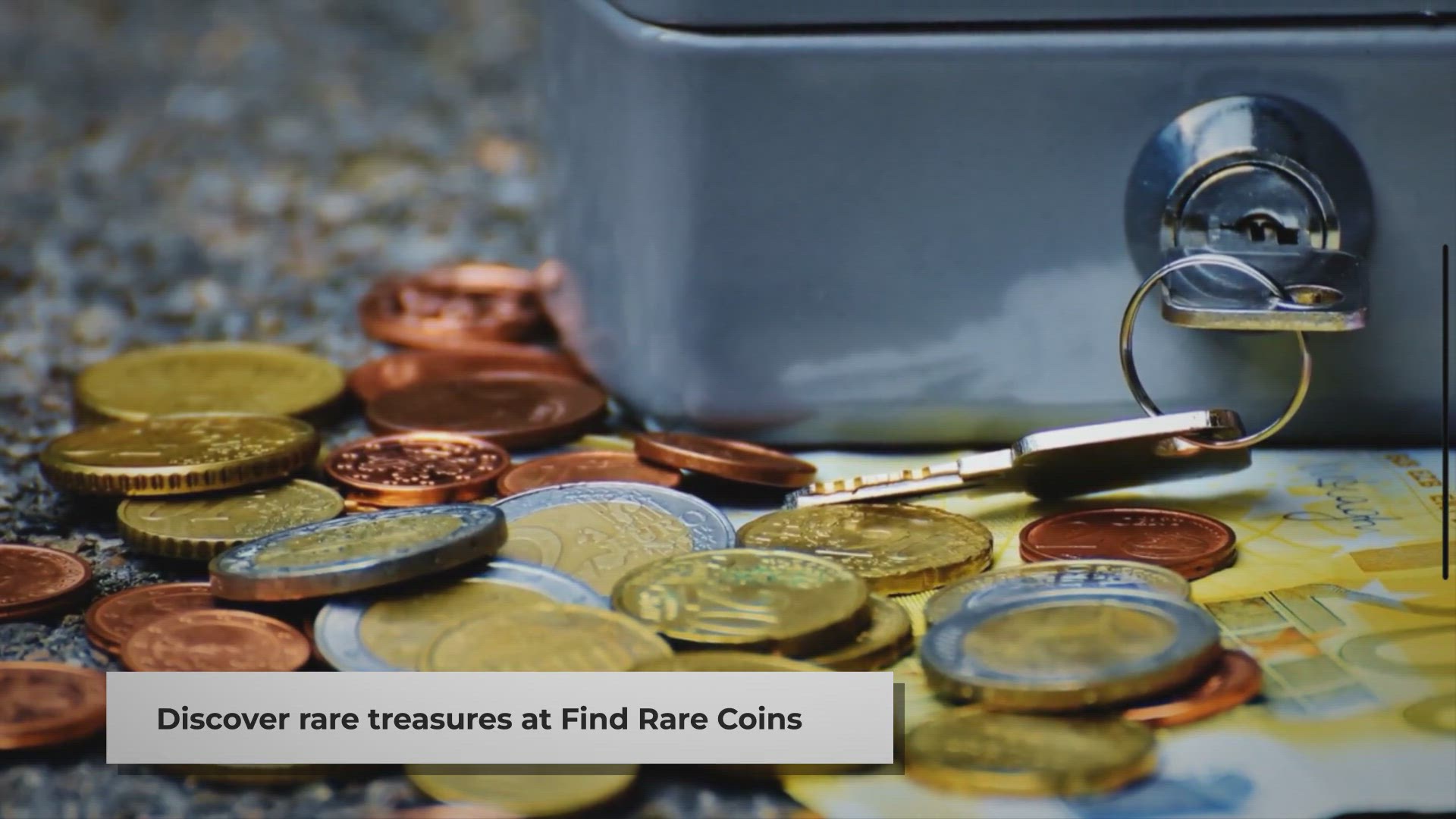
Discover Rare Coins and Collectibles at Find Rare Coins
10K views · Jul 23, 2024 findrarecoins.com
Explore an extensive collection of rare coins, stamps, banknotes, and precious metals at Find Rare Coins. Unlock the secrets of numismatics with our educational resources and find the perfect additions to your collection.

Learn, Collect, and Invest in Rare Coins and Collectibles
887 views · Jan 25, 2025 findrarecoins.com
Explore a wide selection of rare and collectible coins, from ancient to modern. Find trusted reference material, historical insights, and expert resources to help you buy, collect, and invest with confidence.

History of U.S. One Cent, Two Cent, Three Cent & Large C...
0 views · Apr 21, 2025 findrarecoins.com
Discover the fascinating history of America's earliest coinage in this 3-minute journey through the one-cent, two-cent, three-cent, and large cent coins of the United States! From the oversized Large Cent of the 1790s to the first coin to bear "In God We Trust," this video explores the stories behind these rare and collectible pieces of American history. 📀 What You’ll Learn: Origins and evolution of the Large Cent (1793–1857) Civil War-era Two-Cent Coin and its historic motto Purpose of the Three-Cent “Trime” and its postal connection Legacy of the One-Cent coin, from Indian Head to Lincoln #RareCoins #USCoins #CoinCollecting #Numismatics #LargeCent #TwoCentCoin #ThreeCentCoin #PennyHistory #CoinHistory #CoinCollectors #LincolnCent #IndianHeadPenny #FindRareCoins #AntiqueCoins #CollectingCoins 🔍 Visit us for more rare coin guides: 👉 https://FindRareCoins.com 👍 Like | 💬 Comment | 🔔 Subscribe for more coin collecting insights!